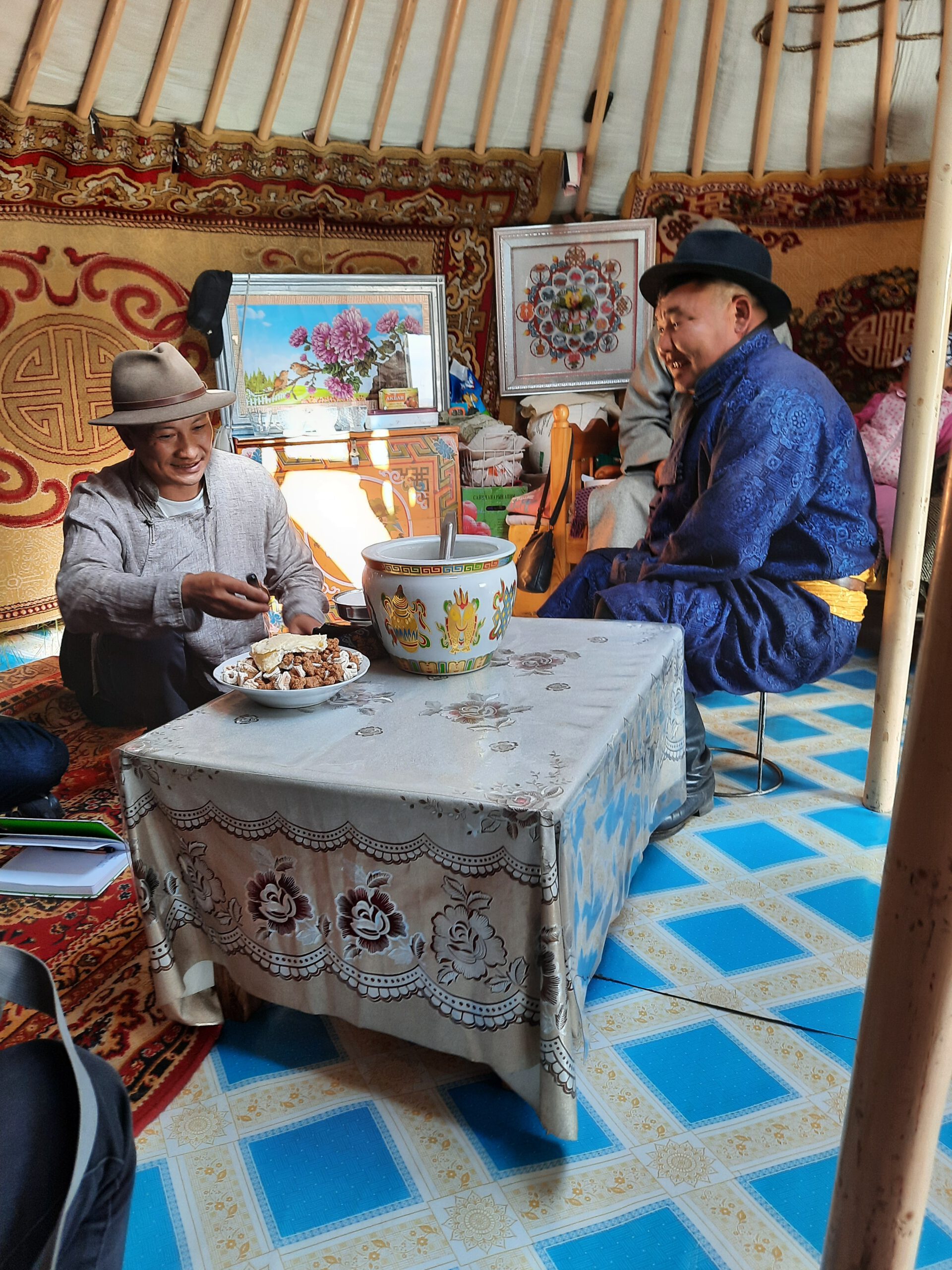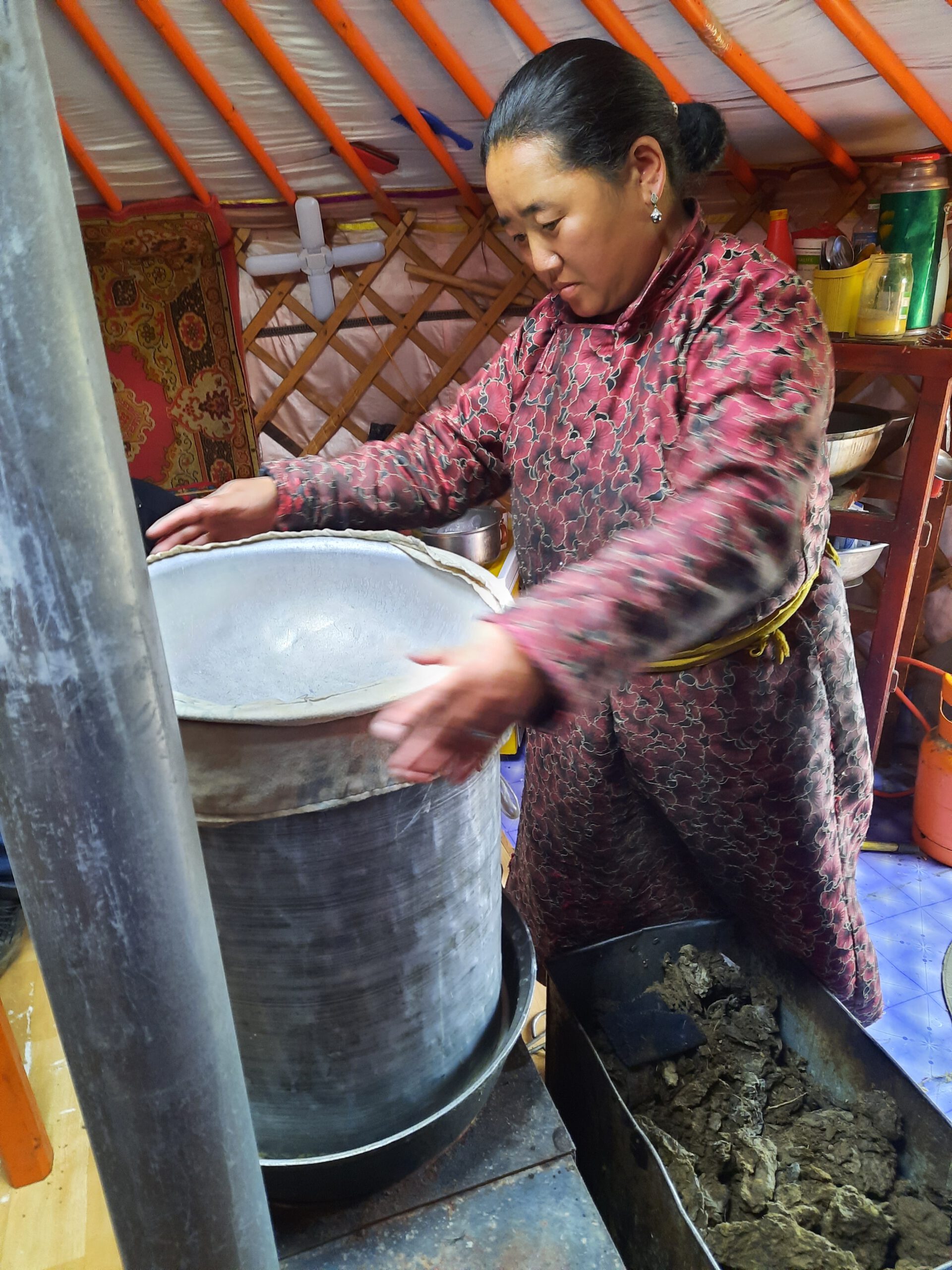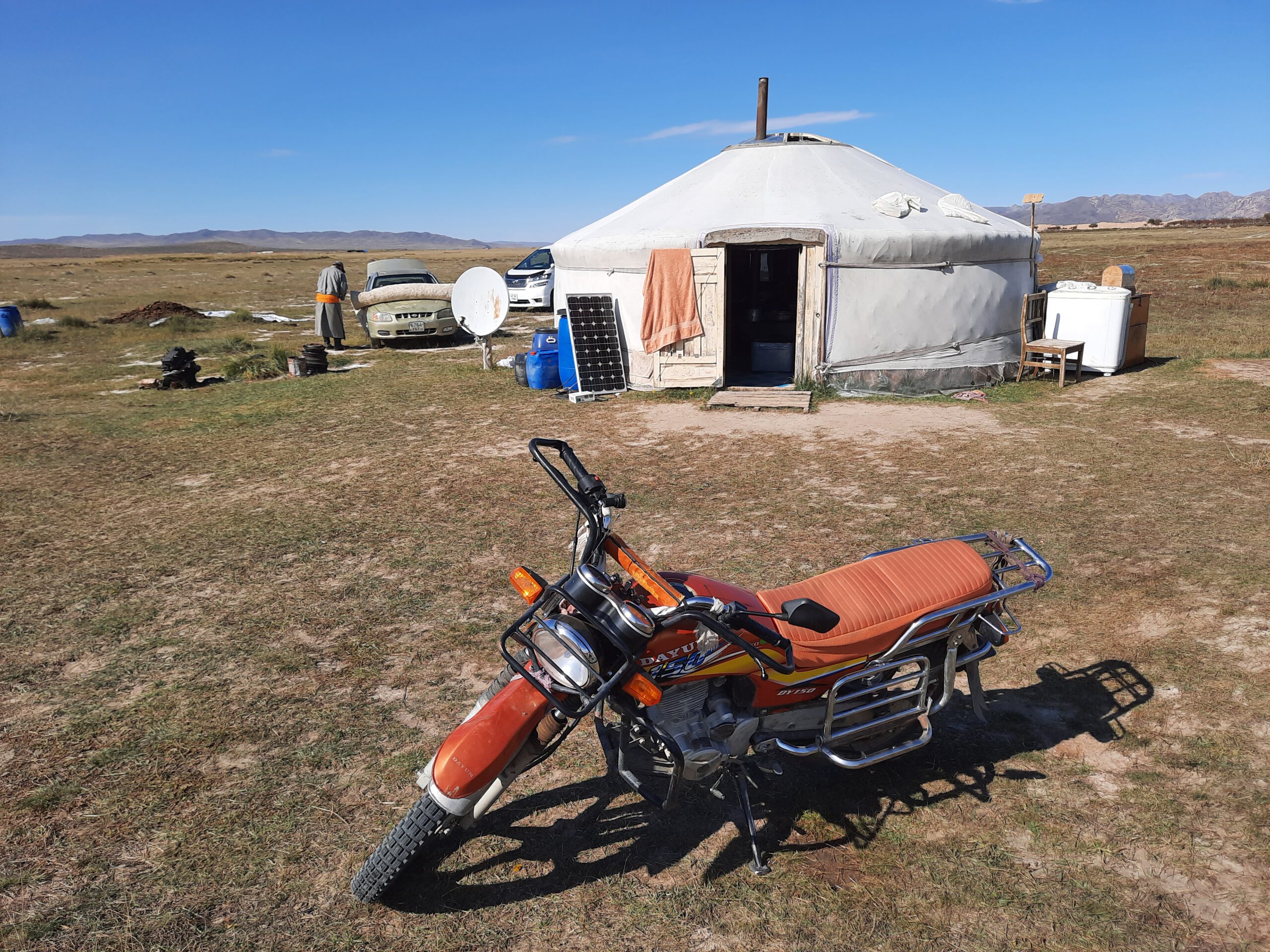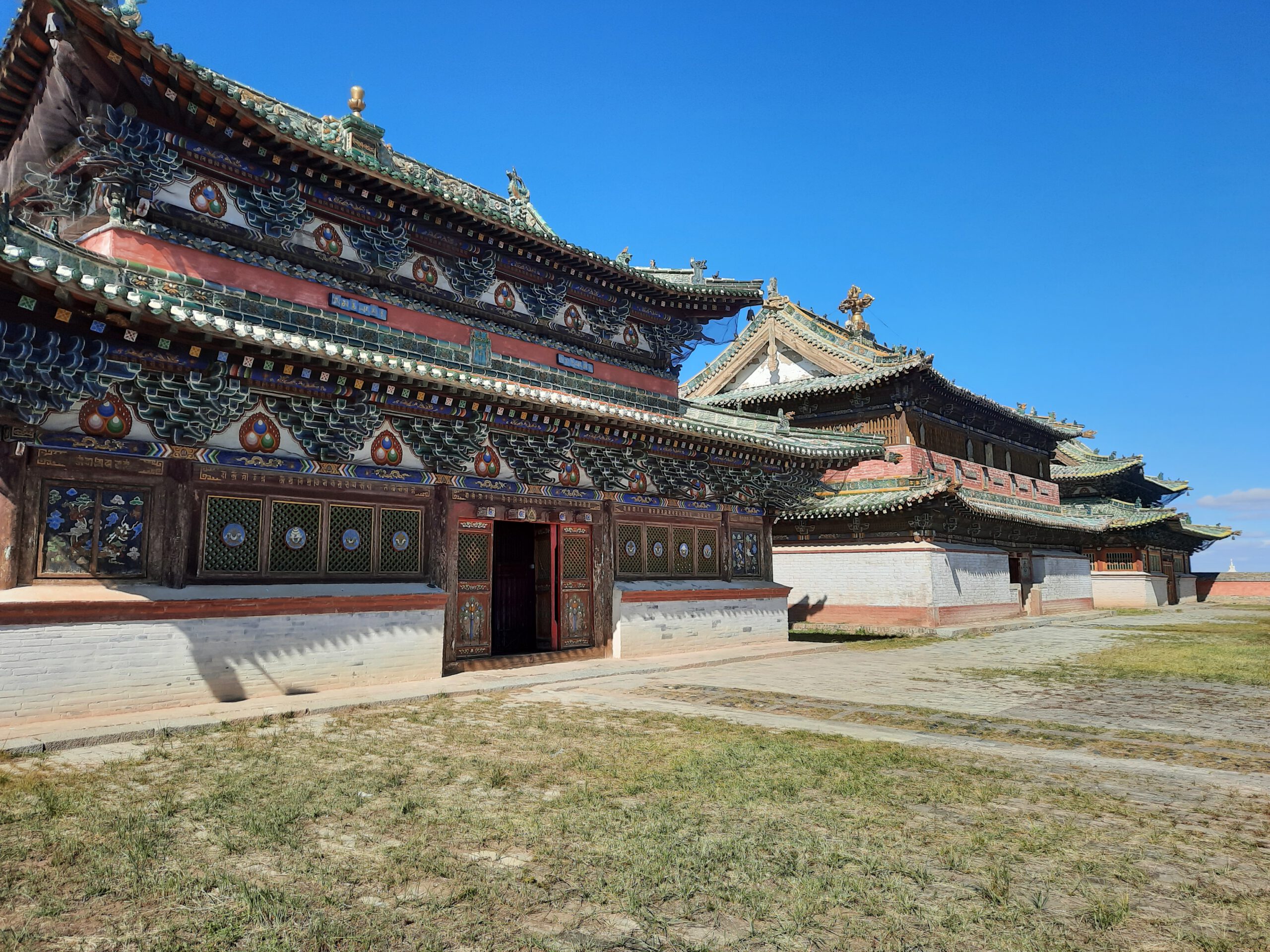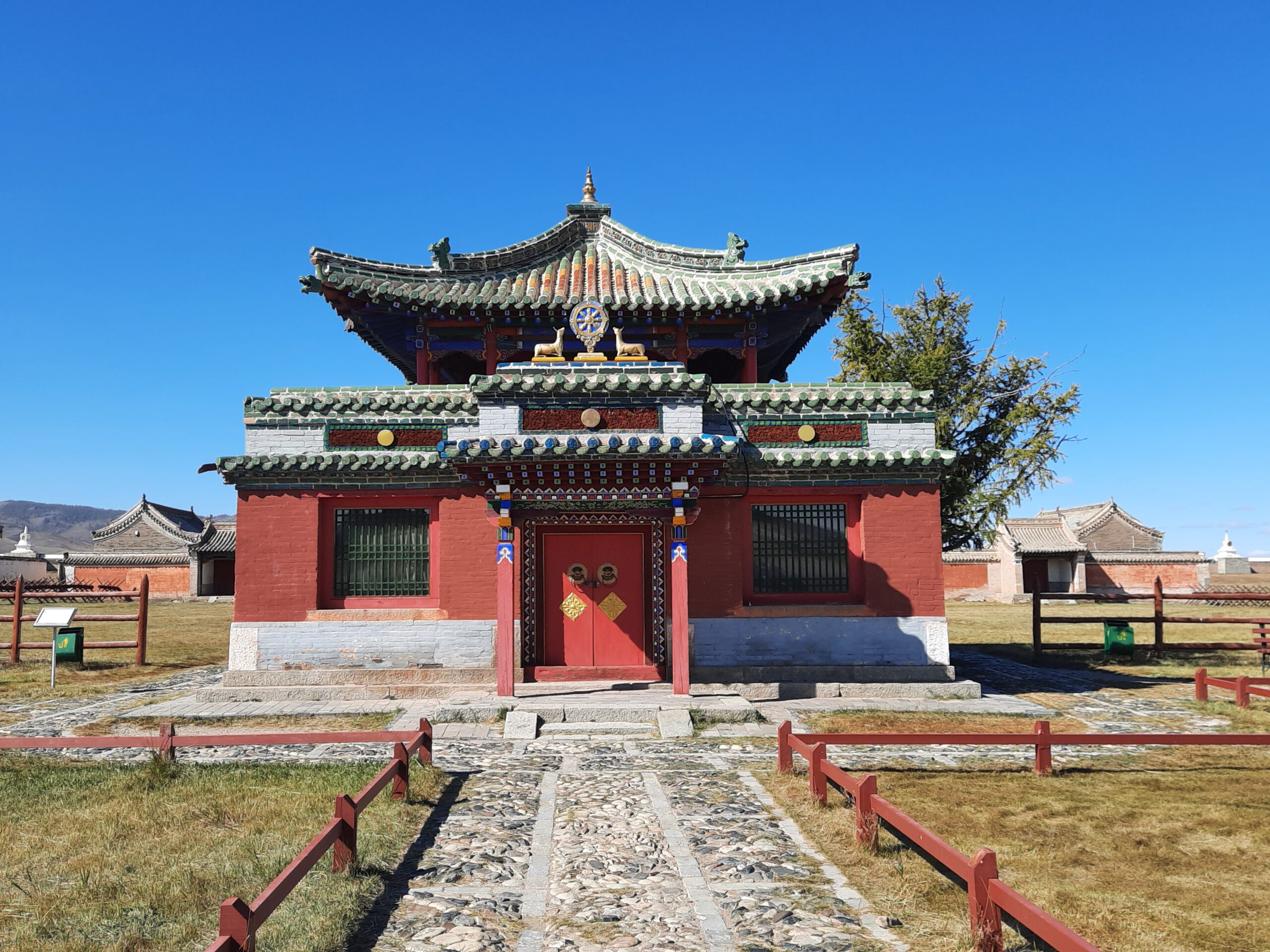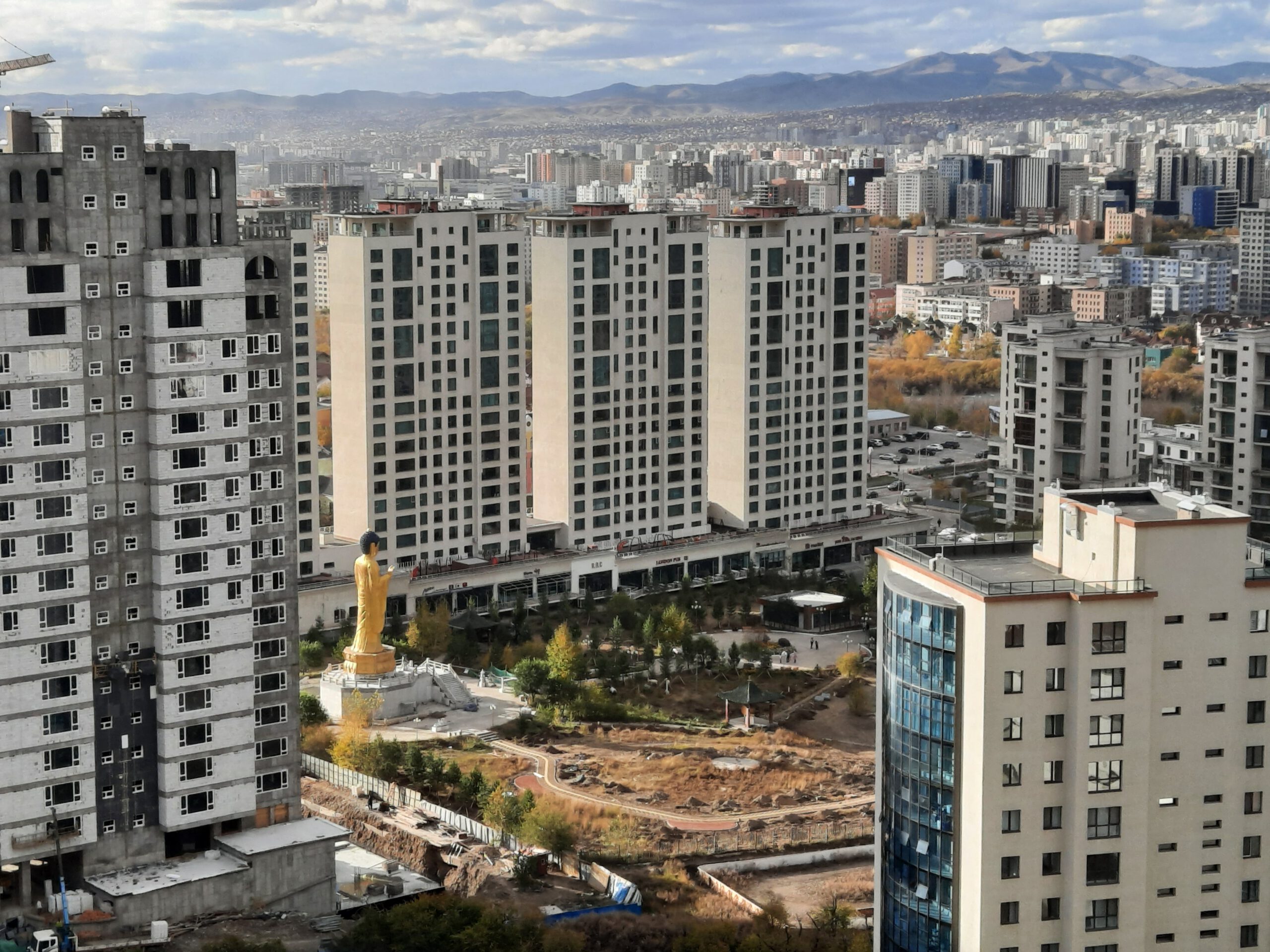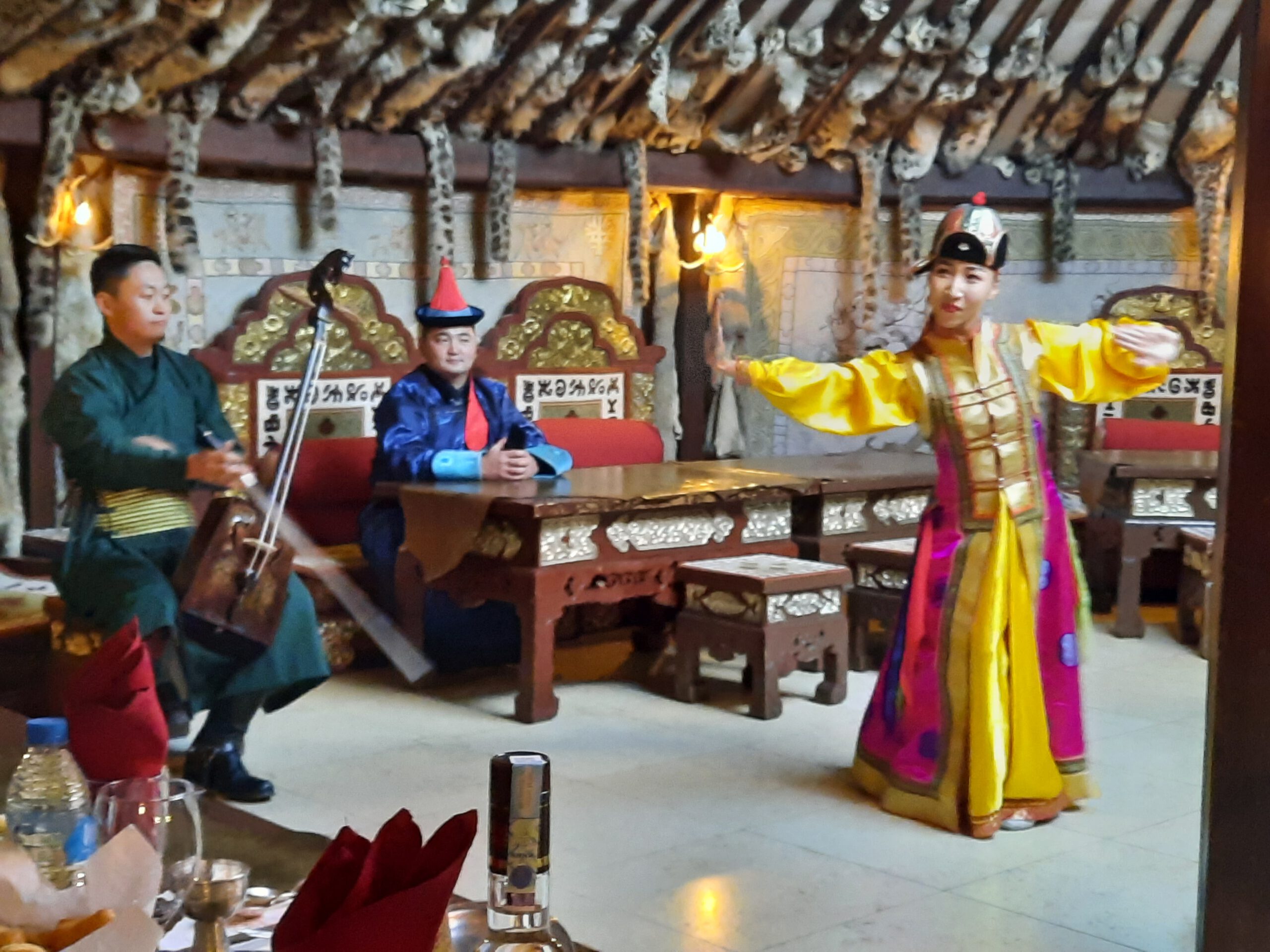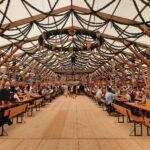
To the Oktoberfest in Munich
17. November 2023
Cruise on the river Rhône through Provence
14. March 2024In Genghis Khan’s footsteps and milk schnapps in the steppe
Lonely Planet’s „Best in Travel“ country list is eagerly awaited every year. It’s been out for a few weeks now and Mongolia takes the coveted first place in the top ten countries for 2024.
A good reason to remind myself of the end of September 2021. Back then, I was travelling with a group of journalists for a week in the huge country between Russia and China – it was an unforgettable journey through a wild steppe landscape, with visits to nomadic families and in the footsteps of the legendary Genghis Khan and his successors. The contrasts could not have been greater: From the chaotic metropolis of Ulaanbaatar with its millions of inhabitants, we travel to nomads and get to know their deprived, not always safe, but happy life in round tents.
So if, like me, you love magnificent landscapes that are virtually untouched by civilisation, want to immerse yourself in a foreign culture and have no problem spending the night in simple tents and guesthouses, then join us on an unforgettable trip to Central Asia. Mongolian Airlines (MIAT) will take you from Frankfurt to Ulaanbaatar in just eight hours on a direct flight (ticket from approx. 600 euros). Since October 2023, MIAT has been flying three times a week (Monday, Wednesday and Saturday) from Frankfurt to the Mongolian capital. Five to six flights a week are reportedly in the pipeline. Let’s go!
An icy wind from Siberia blows across the grass steppe of central Mongolia. Despite my thick jacket, I’m cold, but I’m completely mesmerised. I am standing in a vast landscape of rolling grassy hills and shimmering golden dunes under a steel-blue sky to the west of Ulaanbaatar. No electricity pylons, no cars, no fences, just nature. Hundreds of sheep graze in front of me, horses gallop past. A little further on, a dozen camels lie in a sandy hollow next to a yurt (a typical round tent, also known as a ger). This little corner of the world is magically beautiful and you almost feel like you’ve travelled back in time to a century ago, when the industrial revolution was still far away.
- Munkbayar’s camels lie in a sand pit near his yurt. The animals are neither leashed nor fenced in
- Open-minded and cheerful: Munkbayar’s family in Elsen Tasarkhai
- Near the capital, guests can stay at the Chingghis Khan Khuree yurt camp
- A camel ride through the dunes of Elsen Tasarkhai is one of my fondest memories
A couple of children are playing in front of the white yurt of the couple Üürzaich and Munkbayar in Elsen Tasarkhai and a stove fuelled with camel dung is roaring inside. We are guests of nomads. As they have done for centuries, they move through the country with the seasons to set up their yurt where their animals – mostly sheep, goats, camels and horses – can find enough grass and food and are protected in the icy winter.
We take a seat on the two beds, which now serve as sofas. In the centre is the oven, heating and cooker in one. There are not many other furnishings in the yurt, but there is a solar panel and satellite dish in front of the tent, as well as a small television, freezer, mobile phone and sometimes a washing machine.
A bowl of airag is passed around. The fermented mare’s milk tastes sour like new wine, accompanied by dried curd as a snack and later khorkhog – a feast especially for the journalists from Germany. It is mutton cooked with hot stones. It is eaten with the fingers and a certain part of the cleanly gnawed bones is later used as tokens. These are the sheep’s knuckles and the game is called shagai.
If your hands are still cold after a meal, grab one of the warm, greasy cooking stones. By now at the latest, your fingers will have regained their blood circulation. Afterwards, bowls of home-distilled milk schnapps and vodka are circulating. The Mongolians in the yurt begin to sing. It is a fascinating throat singing. Touching! And also when Munkbayar talks about what it’s like when a long, hard winter makes life a challenge. Because at -40 degrees, around half of his animals die and the family survives thanks to salted milk tea and plenty of meat. Fruit and vegetables are scarce and rarely available. Nevertheless, the couple and their children are happy. If the land is privatised by politicians, the nomadic life will be over. Munkbayar is afraid of this, as our travel guide Galtai Galsan explains.
Now the nomadic family wants us journalists to sing something too. Surprise is written all over our faces. We are a motley group who only got to know each other on departure and after a brief discussion, we sing the old pop hit „Dschinghis Khan“. Perhaps not the best idea. Our performance is poor, the nomads look unimpressed. Over the next few days, we will sing more often in the various yurts over airag and vodka. It’s part of the culture here, just like archery, horse riding and wrestling.
- The mares are milked daily. Fermented mare’s milk (Airag) is very popular
- Khorkhog is mutton cooked with hot stones
- The nomad Munkbayar (right) welcomes his guests with dried quark and airag
- Nomadic children usually learn to ride early and well
- After only about thirty minutes, the milk schnapps was distilled in the yurt
- Mother and daughter in the yurt and in the background hangs the animal skin in which the airag is kept
- Archery is a national sport
- The deel (coat) keeps even the youngest ones nice and warm
- Mopeds, cars, washing machines, solar panels and satellite dishes are part of Munkbayar’s household
Around half a million nomads still live in Mongolia, which is around 4.5 times larger than Germany and has a population of only around 3.3 million. They live in harmony with nature almost as they did in the days of Genghis Khan in the early Middle Ages. The legendary and power-hungry ruler (ca. 1162-1227) is revered as a national hero. He united the numerous nomadic tribes for the first time and laid the foundations for one of the largest empires in the world – the Golden Horde – with his campaigns of conquest. Genghis‘ successors then created a great empire from Eastern Europe to Beijing, which was ruled for around 160 years from Kharkhorin (old: Karakorum), just under six hours‘ drive (360 km) west of Ulaanbaatar.
Once we arrive in Kharkhorin, we visit the museum, which is well worth seeing. It takes visitors back to the wild times of the mighty khans, who ruled the world’s largest empire from here for a short time. The model of the old capital in the museum – a gift from the German Foreign Office – is particularly vivid. It consisted not only of the khan’s palace, streets and houses, but also of Buddhist temples, mosques, a Christian church and the „Silver Tree“, a fountain that could dispense four different liquids, including airag, and was made by a blacksmith from Paris in 1254. It was clearly a city with a cosmopolitan flair, where people of different religions lived side by side. Outside the museum door, you can also find out about the excavations of the ancient city, in which the German Archaeological Institute was involved from 1998 to 2004.
A little further on is the Buddhist-Lamaist monastery of Erdenezuu. Today it is a museum after Stalin’s troops murdered all the monks in the 1930s. The reason: the Mongolian People’s Republic was proclaimed in 1924 and domestic policy was dictated by Soviet Russia. But the monastery, which was built in 1586, is still a spiritual place. Prayer wheels clatter in the wind in front of the individual temples with their curved roofs and white stupas on the monastery wall glow in the sun.
- Greetings from Tibet and China! The Lamaist temples belong to the Erdenezuu monastery in Kharkhorin and date back to the 16th century
- Until 1939, thousands of Buddhist monks lived in Erdenezuu Monastery
- The stone turtle is one of the last witnesses of the ancient Karakoram, Genghis Khan’s former capital
- Prayer wheels in Erdenezuu Monastery in Kharkhorin clink in the wind
We drive on to the Hustain Nuruu National Park, where we go on safari to see the prehistoric horses. The pony-sized Przewalski’s horses are considered the ancestors of all horse breeds known today and the Mongolian Gobi Desert was their last refuge until the last horses in the wild were wiped out in the 1960s. But around 1900, the Hamburg animal dealer Carl Hagenbeck saved the original parents, which is why today a small herd of Przewalski’s horses, protected by scientists, once again lives in the Hustain-Nuruu National Park. And we can see them through binoculars as they graze idyllically in the sunlit hill steppe.
- An employee of the Hustain Nuruu Park Foundation not only leads us to the ancient horses, which are called Thaki here, but also to a two-kilometer-long avenue with stone figures that Turkic tribes erected here from around the 6th to 8th centuries
- Stairs and an elevator take you to a viewing platform on the statue’s horse head
- The monumental, 48-meter-high Genghis Khan equestrian statue has stood east of the capital since 2008
Back in Ulaanbaatar, we drift through the mega-city where half of Mongolia’s population, around 1.8 million people, live. Socialist prefabricated buildings, Dubai-style skyscrapers, wildly sprawling yurt neighbourhoods and four lignite-fired power stations – urban planning obviously doesn’t play a major role here and smog is often the order of the day. We stroll across the monumental Genghis Khan Square, which was built for communist parades, and visit the Bogd Khan Museum with the winter palace of the last Bogd Khan (religious and secular ruler), built in 1893.
Then we walk to the black market with its large halls, which has never changed its name. You can find everything here: from food and meat to entire yurts, from wooden riding saddles to jogging trousers, and we let ourselves drift through the exciting hustle and bustle before moving on to a competition in the number one national sport. In the archery competition, both men and women compete in traditional dress. Everyone wears the long Deel coat, the typical Dörvön Talt Malgai cap and Gutul boots with the toe turned upwards. The arrows fly for metres and hit small blocks with pinpoint accuracy.
Afterwards, we savour a last taste of meat-filled dumplings dripping with fat in different variations before heading home with unforgettable memories of Mongolia.
My shopping tips at the end: In the large Gobi cashmere shop, there are wonderful jumpers, coats, dresses and hats made of cashmere wool on two large floors, cheaper than in Europe.
My reading tip: the magical books by the Mongolian author Galsan Tschinag, who writes in German and is the father of our travel guide Galtai Galsan
Tour operators that offer Mongolia in their programme, e.g:
Lernidee Erlebnisreisen, Evaneos, www.deine-mongolei.de Escape to Mongolia, G Adventures, Ikarus Tours, SKR
My participation at the press trip in September 2021 took place at the invitation of the Tourism Office Mongolia.
- About half of Mongolians live in high-rise buildings in Ulaanbaatar
- Prefabricated buildings, yurt quarters and Dubai-style skyscrapers: Ulaanbaatar
- Traditional music and dance in the Golden Yurt
- State guests are also entertained in the Golden Yurt of the Chingis Khan Khuree camp. Angela Merkel ate here in 2016








